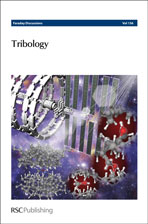Recently, much attention has been given to diamond-like carbon (DLC) as a solid-state lubricant, because it exhibits high resistance to wear, low friction and low abrasion. Experimentally it is reported that gas environments are very important for improving the tribological characteristics of DLC films. Recently one of the authors in the present paper, J.-M. Martin, experimentally observed that the low friction of DLC films is realized under alcohol environments. In the present paper, we aim to clarify the low-friction mechanism of the DLC films under methanol environments by using our tight-binding quantum chemical molecular dynamics method. We constructed the simulation model in which one methanol molecule is sandwiched between two hydrogen-terminated DLC films. Then, we performed sliding simulations of the DLC films. We observed the chemical reaction of the methanol molecule under sliding conditions. The methanol molecule decomposed and then OH-termination of the DLC was realized and the CH3 species was incorporated into the DLC film. We already reported that the OH-terminated DLC film is very effective to achieve good low-friction properties under high pressure conditions, compared to H-terminated DLC films. Here, we suggest that methanol environments are very effective to realize the OH-termination of DLC films which leads to the good low-friction properties.
You have access to this article
 Please wait while we load your content...
Something went wrong. Try again?
Please wait while we load your content...
Something went wrong. Try again?

 Please wait while we load your content...
Please wait while we load your content...